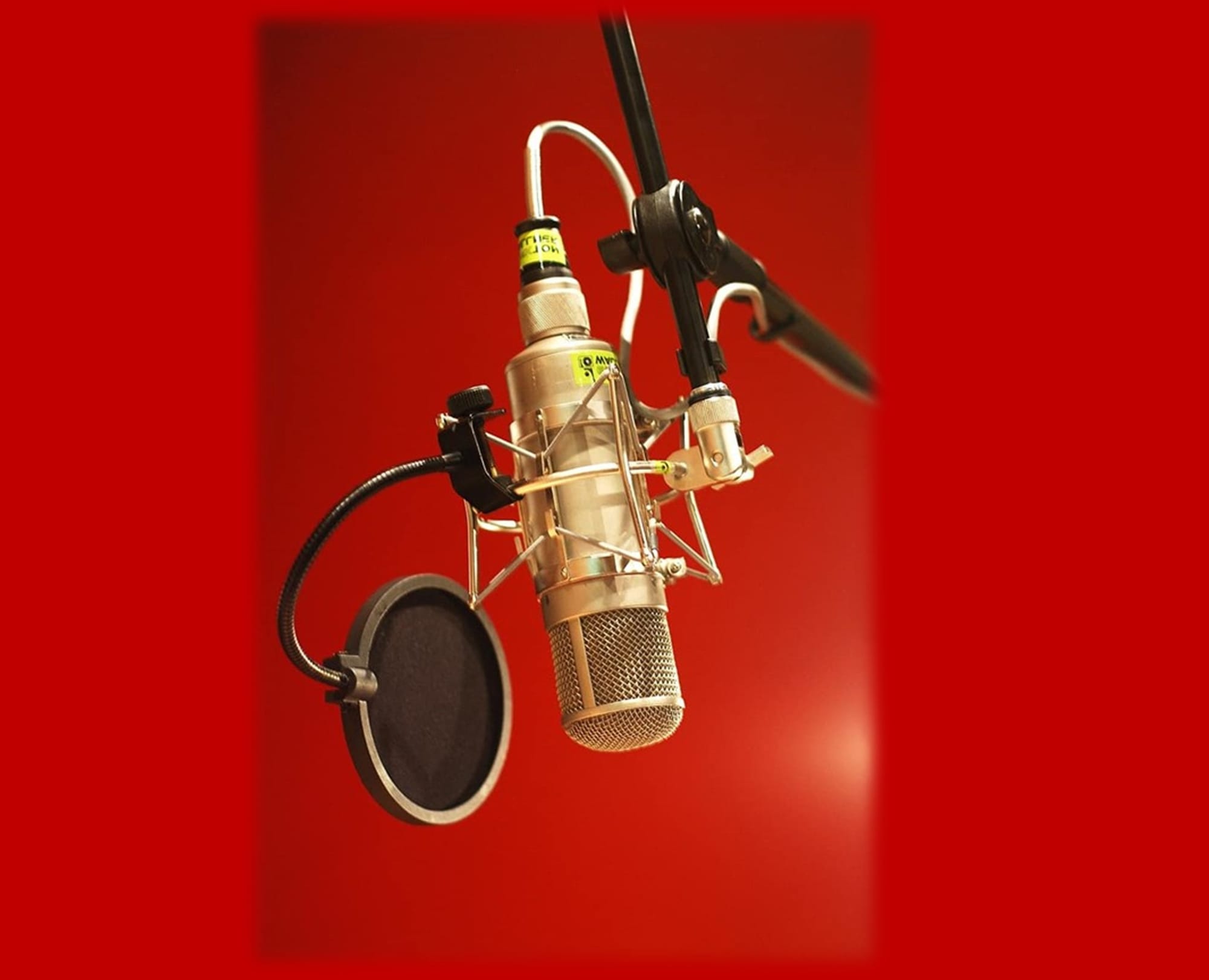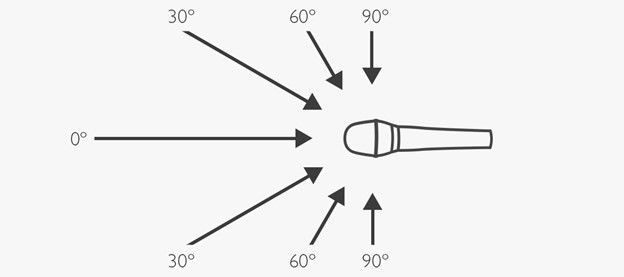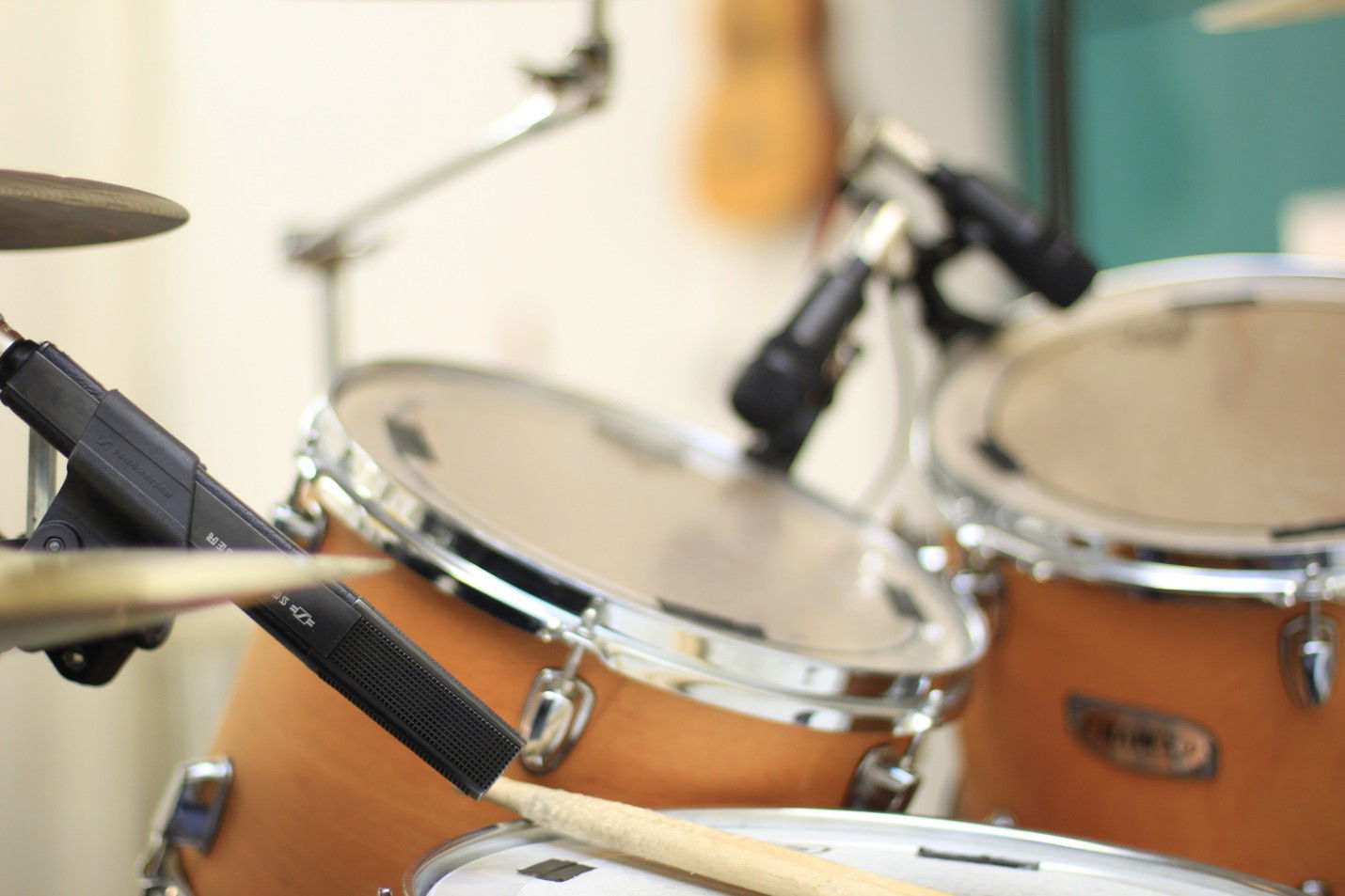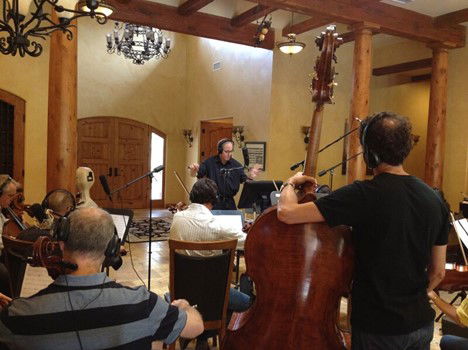How to Make the Best Recording in a Studio – Part Two

In Part One, we discussed Practice, Types of Projects, Studio Gear, and Suggested Order for Recording. To read the first article, click HERE.
In Part Two, we’ll be looking at Microphone Choice and Placement. There is a lot to consider when choosing a mic and determining how to place it.

Microphone Choice and Placement: There is a lot of discussion and disagreement about the type and placement of microphones. To begin, we’ll review the microphone types and variations.
Here are the basic types of microphones:
- Dynamic – These are good for instruments with a wide dynamic range like horns, some vocals, etc. Depending on the mic, they can be fairly good for subtle details.
- Condenser – These capture more of the details of a voice or instrument and are better suited to sound sources with higher frequencies and a narrower dynamic range. These are better for acoustic string instruments like guitars, mandolins and dulcimers.
- Ribbon – These are rare and expensive. Generally, a condenser mic will fill your needs equally as well.
Here are some of the variations. These apply to all microphone types, although some variations are more common among some mic types than others.
- Cardioid – This is a fairly directional mic that picks up less and less sound the farther away from the axis the sound source is.
- Hypercardioid and Supercardioid – These are highly directional types of mics, used when there is a need to keep out as much crosstalk as possible.
- Figure Eight – This pattern picks up sound from either side of the mic. It’s use for duets and sometimes for stereo recording. Only condenser and ribbon type microphones are available in this patter.
- Omnidirectional – This type picks up sound from virtually all directions, and is used when there is a large area of sound source to be recorded, such as choirs or instrumental ensembles.
Before we start discussing mics, there are a couple of other characteristics of microphones that need to be kept in mind.
Proximity Effect – This is the effect that the distance from the sound source has on the sound that the mic picks up. If a mic is on axis and too close to most sound sources, it will pick up more of the lower frequencies. The farther away the mic is, the less low end it will pick up. Somewhere in the middle is a sweet spot where the sound is the most natural. This, too takes trial and error, often for each sound source.
Microphone Axis Position – Different mics have different ways to pick up sound. We’ve discussed the various pick-up patterns of microphones (cardioid, omni-directional). Here is how engineers discuss the position of the mic in relation to the sound source.

While looking at the above diagram, you’ll notice the different degree markings. If a voice or speaker (like from a guitar amp) is directly in front of the mic at 0°, it is said to be “On Axis” and will pick up the most sound, whether good or bad. The farther away from 0° on the the sound source is, the less it will pick up, which can be good. A vocal mic at 20° to 30° (known as “Off Axis”) often will sound warmer and pick up less noise of lips parting or inhaling. If a mic is placed at 0° in front of a brass instrument like a trumpet, it will pick up the “spitting” sound of the attack on the notes as well as some of the clunking of the valves. Again, placing the mic off-axis will pick up all of the desired tone and none of the mechanical noises.
As with any recording technique, it’s best to experiment with mics and their placements. It’s also good to make notes. Some things will be constant; others may change from one instrument to another.
Instrument Types and Suggested Mics. This list will get you started, but for more information, please consult your favorite engineers and the internet, and then try out a variety of applications to see which mics you prefer.
One piece of information for you to think about while exploring and experimenting with mics is that, even though they may be described identically, not all mics are created equal. The micro-fine wire and the diaphragms, especially, can have variations to make the same mic from the same manufacturer perform differently, if only slightly.
Solo Vocals
- Mic Choice - A dynamic mic works better for louder vocals. Singers doing rock or blues usually don’t rely on subtleties for their sound. For pop, folk and other singers with more nuances to their sound should use a condenser mic. Some would prefer a ribbon mic, but these are even more delicate than a condenser.
- Placement – For dynamic mics, just a bit off-axis, between 4” and 10” away. For condenser mics, on-axis is good and also between 4” and 10” away.
Choral Groups
- Mic Choice - Condenser mics are better for this application. For a smaller group, two good condensers will work well. There are some condenser mics called boundary mics that pick up a very wide area of sound and work well for a wide group.
- Placement – There are two ways that this can be done. One is with a larger number of mics, placed to pick up the sound of two or three singers, then mixed to simulate the stereo effect of the group as a whole. The other way, which I prefer, is to use two or three good condensers and place them between three and six feet in front of the group. If the group is small and not spread out too much, mentally divide the group I half and use two mics angled so that each mic is aimed at the center of each half.
Electric Guitars and Basses
- Mic Choice - One way to record these instruments is to skip the mic altogether and simply plug them directly into the mixer or recorder, by way of a direct box and any other effects. Many guitarists prefer the sound of the speaker, so a mic is needed. The best one for this is a dynamic mic.
- Mic Placement – Because of the construction of a speaker, the mic should be placed a few inches away from the center of the speaker about 20° off axis.
Acoustic Guitars and other Acoustic Instruments
- Mic Choice – The best mic for these instruments is a condenser. Some of these instruments may have a contact mic, which allows them to be plugged directly into the mixer or recorder. They may sound very good, but they don’t have the same sound a s a mic.
- Mic Placement – There has been a lot of discussion and disagreement about this subject as well. Start with one mic, a couple of inches below the sound hole, a couple of inches away from the instrument, and pointed upwards so that the axis is directed at the center of the sound hole. This helps emphasize the higher strings and eliminate some of the boominess of the lower strings.

Acoustic Drums
- Mic Choice – The mics for drums are almost always dynamic. The exception is to use a condenser mic or two for the cymbals. There are mics with larger diaphragms to better pick up the toms and kick drum.
- Mic Placement - Drum mic-ing can be accomplished with only two good mics, one just in front of the kick drum and the other, an omnidirectional, placed about six feet high and about four feet in front of the kit. The most comprehensive mic-ing technique involves placing a mic on each drum and cymbal, sometimes with two mics on the snare drum. The challenge with that is the crosstalk, the sounds of the other drums being picked up by microphones that are not intended to pick up their sound. I opt for an in-between approach, with one large diaphragm mic on the kick, one on the snare and first mounted tom, another on the second mounted tom and floor tom, and a good condenser or two on the cymbals. To reduce crosstalk, I use an equalizer on the cymbal mics to greatly reduce the low frequencies that it picks up. You also want to be sure to keep the mics out of the way of the drummer’s sticks.
Acoustic Pianos
- Mic Choice – Generally, either a dynamic or condenser will work well, depending on their quality and placement. Pianos, especially grand pianos, should have two or more mics to capture all of the sound. For the lower strings, a large diaphragm can be used.
- Mic Placement – There are contact microphones for pianos that work the same as for an acoustic guitar. These plug straight into the mixer or recorder. If there is a need to isolate the piano, use dynamic mics because they will need to be closer to the strings.
An isolated piano, unless it’s in an isolation room, will be covered with packing quilts or some other similar material. The mics will be under the lid of the piano, only a few inches from the strings. They should be aimed the same way as you would for a choral group, with each mic pointing towards the middle of it respective section.
If the piano can be recorded by itself, a pair of condenser mics will do nicely. One would be placed about two feet away from the strings, facing the center of the strings. The other could be placed about four feet away, aimed so it catches the reflections of sound off of the lid, if it’s a grand piano. A third mic can be positioned underneath, aimed directly at the soundboard but about 15% of the way toward the higher end of the instrument. This mic would need to be able to be fed out of phase to the recorder. Many modern mixers and recorders have a phase inversion switch. Otherwise, the mic would have to have its wiring reversed so as to be out of phase. Phase has to do with the way that sound waves travel and are picked up by the mic. That will have to be another article.
For an upright, place it away from the wall about six feet and place the mic about three or four feet from the sounding board (the back of the piano).
Horns (Brass and Woodwinds)
- Mic Choice – If you are recording just a few horns, as in a horn section for a rock band, dynamic mics. Brass, in particular, can be rough on mics. Woodwind instruments like flutes and oboes have a lot of overtones to contend with, so a condenser mic is worth considering if that characteristic is one that you want to be captured in the recording. If you’re recording a brass ensemble or a concert band, large diaphragm condenser mics might be a better choice.
- Mic Placement – For individual brass, it’s better to place the mic somewhat off axis and between one and three feet away. If crosstalk may be a problem, keep it close. You may need to attenuate the signal a bit. For woodwinds, start with placing the mic midway between the mouthpiece and the end of the instrument. If the music calls for a wide range of notes, it may be better to use two mics, pointing them equally along the length of the instrument.

Strings (Violin, Viola, etc.)
- Mic Choice – For strings, condenser or ribbon mics are best. Use a small diaphragm mic for close mic-ing. A larger diaphragm can be used for ambient mic-ing.
- Mic Placement – For individual instruments, place the mic a couple of inches above the instrument, between the tail piece and the bridge and angles to face the F holes. For a String Orchestra, use at least two mics per section. For all but the basses, place the mics about two or three feet in front of the section with the mics facing downward towards the instruments. You want to catch the sound as it moves from the sound boards.
< < < < ^ > > > >
In Part Three we’ll look at Effects and When to Apply Them, and the Mixing and Mastering Processes.
For information about Salt Cellar’s recording facility, click HERE. We also have the skills to write horn and string parts for your next project.
Although we have an adequate recording studio, Salt Cellar Creations’ primary business is the creation of sheet music for Concert Band, Choral Groups and String Orchestra, and we have a growing library of original works and arrangements. Explore the available music HERE.
SCC can also compose an original piece for you or do a custom arrangement for you. There are two ways that this can be done; one is much more affordable than the other. And SCC is always looking for ideas of pieces to arrange or suggestions for original pieces.
We have sold music not only in the US but in Canada, the United Kingdom, France, Australia, New Zealand and Austria. Please visit the WEBSITE or CONTACT US to let us know what we can do for you!